Euclid space telescope: ESA's groundbreaking mission to study dark matter and dark energy
The Euclid space telescope uses its incredibly wide field of view to hunt for two of the universe's most mysterious components: dark matter and dark energy. The six-year mission could change cosmology forever.
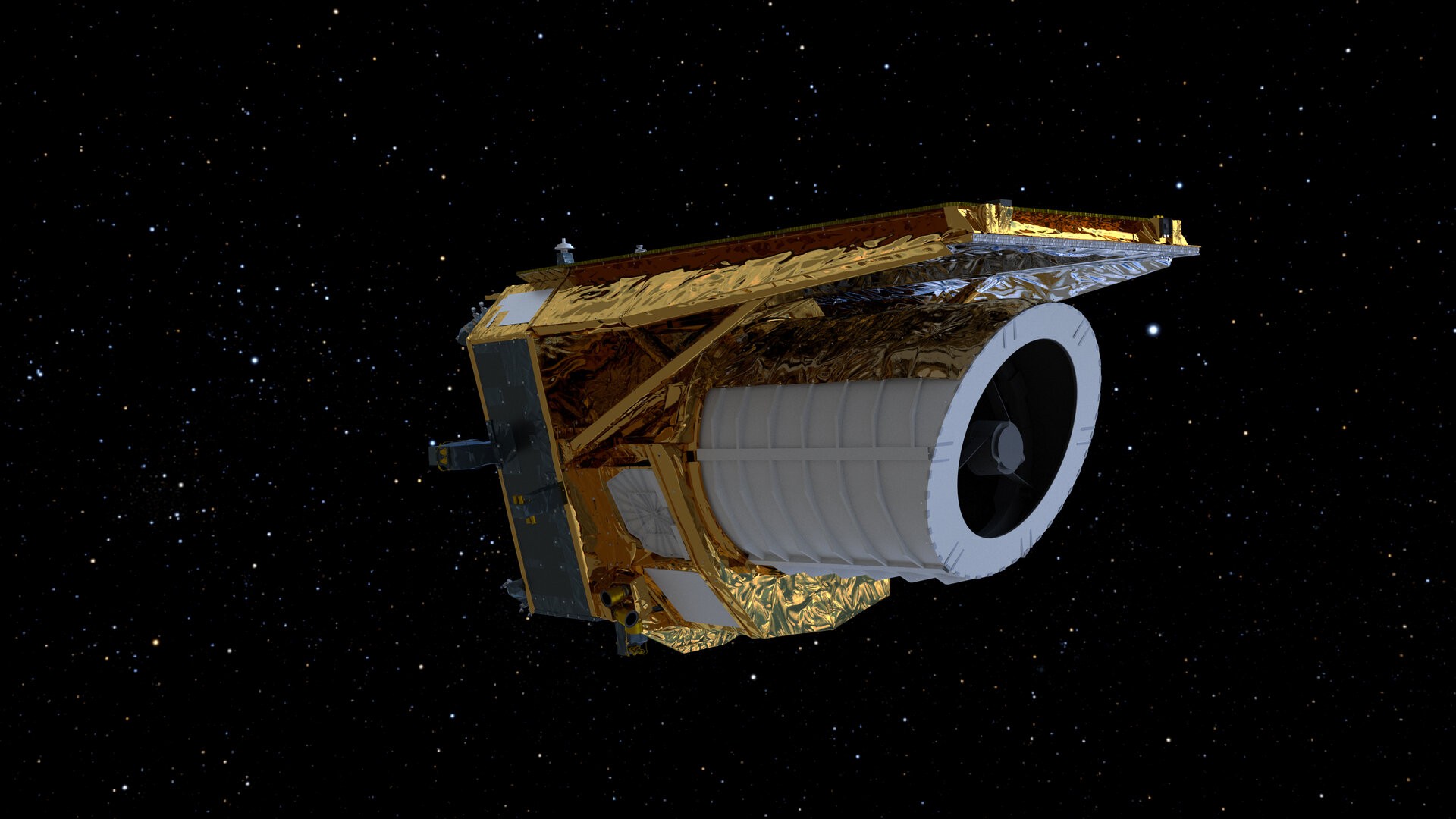
Update: This article was updated on May 23, 2024, with new information and images about Euclid's first science observations.
The European Space Agency's (ESA) Euclid space telescope successfully blasted off from Cape Canaveral, Florida, on July 1, 2023 and shared its first scientific observations on May 23, 2024. The groundbreaking space telescope will hunt for clues about two of the universe's greatest mysteries: dark matter and dark energy.
Despite making up an estimated 95% of the universe, dark matter and dark energy cannot be detected directly. Instead, scientists observe them in the gravitational warping effects seen in many galaxies across the universe. Euclid's enormous field of view will significantly expand this search for warped space-time.
Here's everything you need to know about Euclid and its search for the universe's most mysterious components.
What is Euclid?
Named after the ancient Greek mathematician who's considered the "father of geometry," Euclid is a space telescope that is 14.7 feet (4.5 meters) tall and 10.2 feet (3.1 m) in diameter. The telescope is mounted with just two instruments: a near-infrared camera that will measure the distance and brightness of galaxies, and a visible-light camera that will study their shapes.
Taken on their own, Euclid's cameras are common among space telescopes. What makes Euclid groundbreaking is these instruments' field of view, with a third of the entire night sky and over a billion galaxies expected to be cataloged by the time the telescope has finished its planned six years of scanning. The telescope should be able to peer up to 10 billion years into the past — slightly less than the James Webb Space Telescope, which has looked back more than 13 billion years.
Related: 35 jaw-dropping James Webb Space Telescope images

First science observations
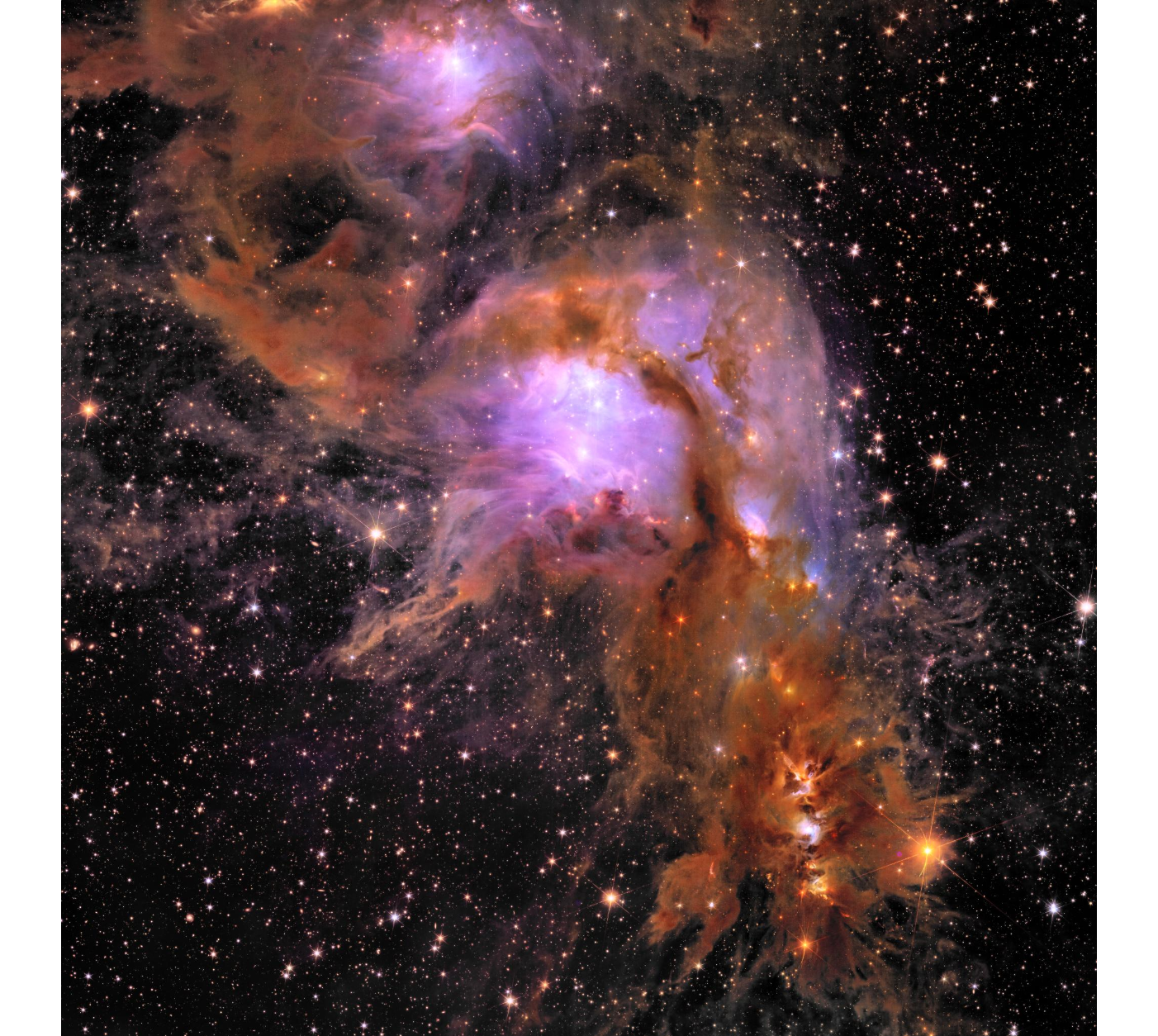
On May 23, 2024, ESA shared five images taken during Euclid's first 24 hours of science operations.
The stunning images include the most detailed-ever look at the Messier 78 star-forming region (above), located 1,300 light-years away within the constellation Orion. The vibrant image reveals more than 300,000 previously unknown objects in the region, including newborn stars, and mysterious "runaway" rogue planets ejected from their star systems.
The first crop of science observations also include detailed views of the massive spiral galaxy NGC 6744, the chaotic Dorado Group of colliding galaxies, and the gargantuan galaxy clusters Abell 2390 and Abell 2764. A map of Euclid's first 10 tagets, including its debut science images and five test images, can be seen below.
Sign up for the Live Science daily newsletter now
Get the world’s most fascinating discoveries delivered straight to your inbox.
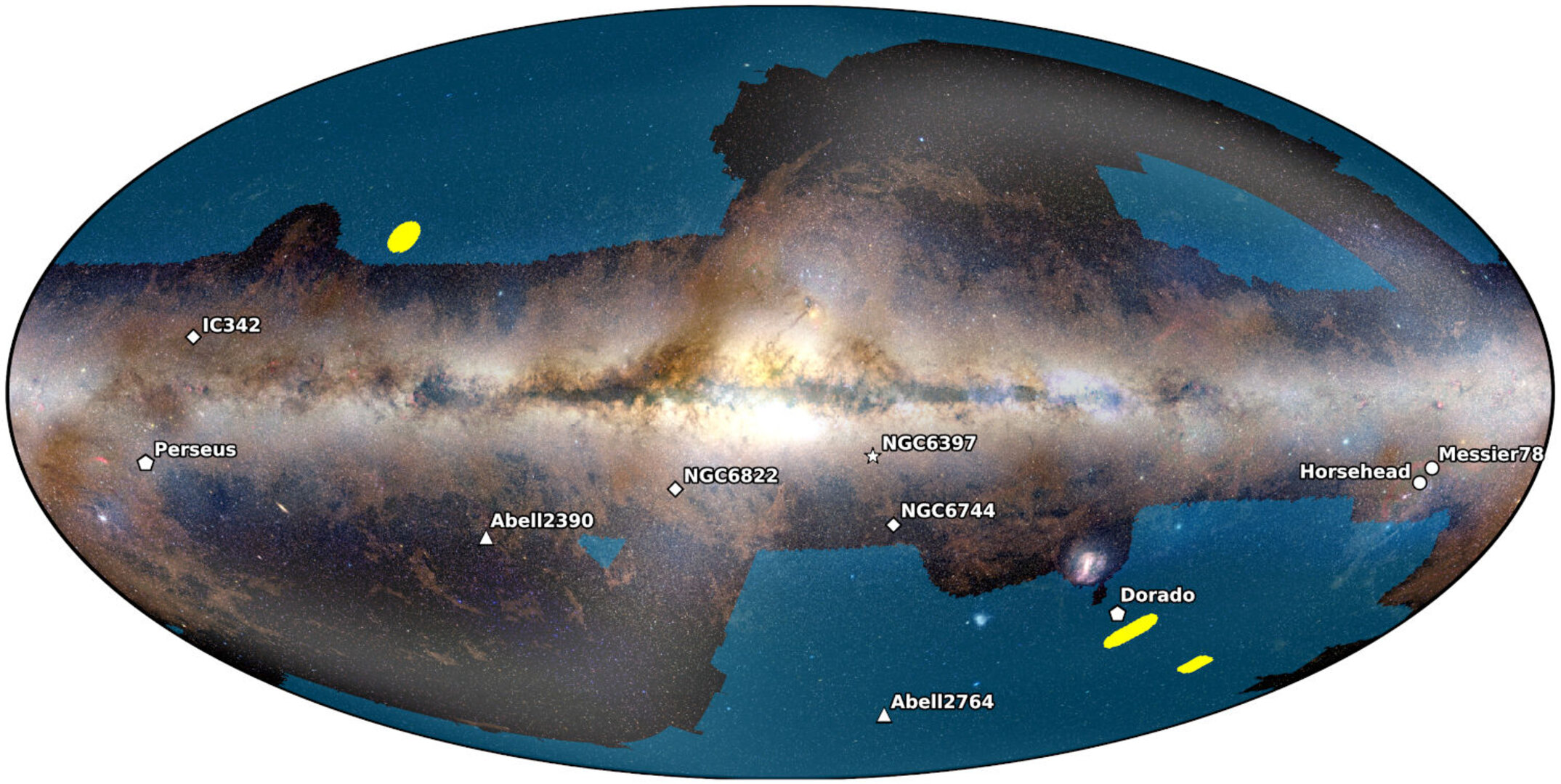
Euclid's debut images
On July 31, 2023, ESA shared the first images taken by Euclid to test the satellite's two main science instruments.
An image taken with Euclid's Near-Infrared Spectrometer and Photometer (NISP) revealed a dazzling starscape of billions of stars and galaxies. Before reaching the instrument's detector, light from the distant objects passed through a filter that splits the light of every star and galaxy according to wavelength, allowing astronomers to determine what each object is made of and, in turn, how far it is from Earth.
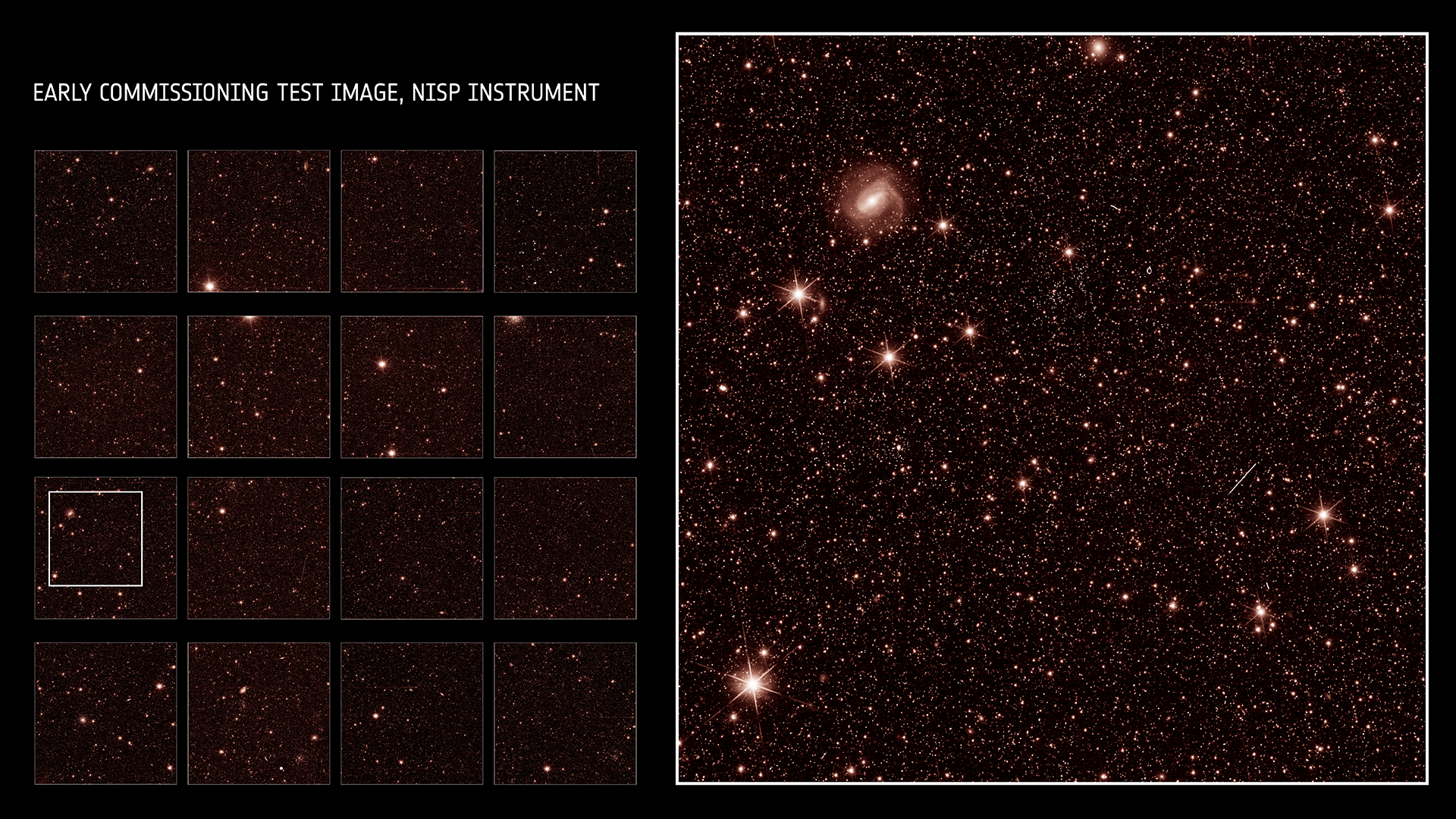
The researchers also tested Euclid's VISible instrument (VIS), to capture the cosmos in visible light (the same type of light that we can see with our unaided eyes). This dense starscape took Euclid 566 seconds to collect, according to ESA. Both test images are largely unprocessed, and only offer a hint at what Euclid will be capable of delivering when fully operational.
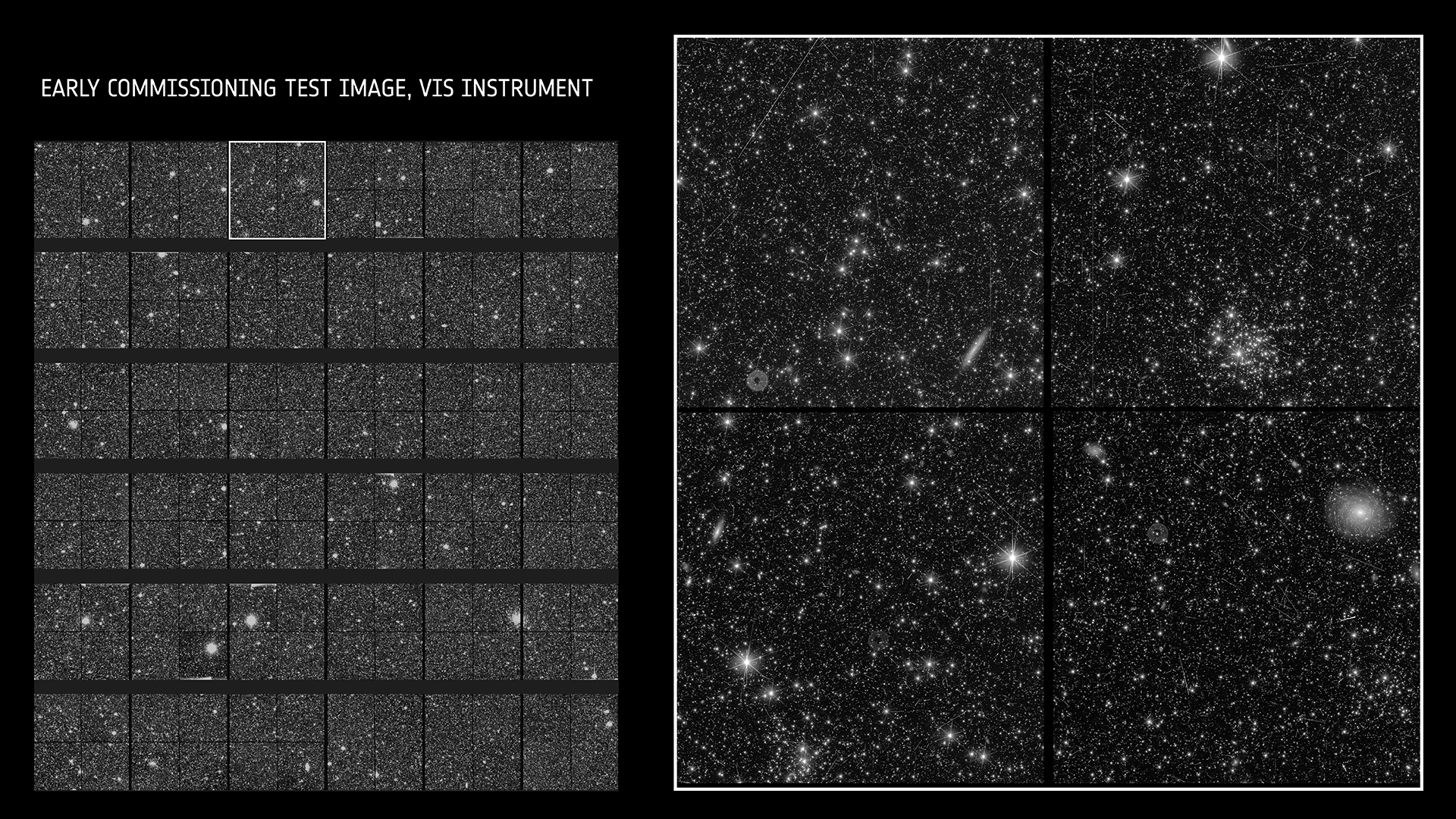
What will Euclid study?
Once Euclid's data has been collected, scientists will use it to create two maps of the universe. The first will detail the spread of dark matter across our universe by gravitational lensing, in which matter bends light from a distant source through curved paths in space-time, thus magnifying it.
The second will use so-called baryon acoustic oscillations, gigantic matter shock waves created when the universe was hot and now frozen in time, as cosmic tree rings to study the universe's accelerating growth and its suspected cause: dark energy.
What is dark matter?
Dark matter is a mysterious and somewhat contradictory type of matter. It makes up an overwhelming 85% of the universe's matter; yet, because it doesn't directly interact with light, it is completely invisible.
So how do we know dark matter is there? While dark matter itself is invisible, the gravitational interactions it has with its surroundings are not — making its presence apparent in its extreme gravitational warping of galaxies, or in how it accelerates stars to otherwise inexplicable speeds as they orbit galactic centers.
The composition of dark matter isn't known. Some theories suggest that hypothetical particles called weakly interacting massive particles (WIMPs), each weighing 10 to 100 times the mass of a proton, could be ideal candidates to fill the theoretical gaps. Others have proposed that a minuscule particle less than a billionth the size of an electron — called an axion — could be the substance's primary candidate.
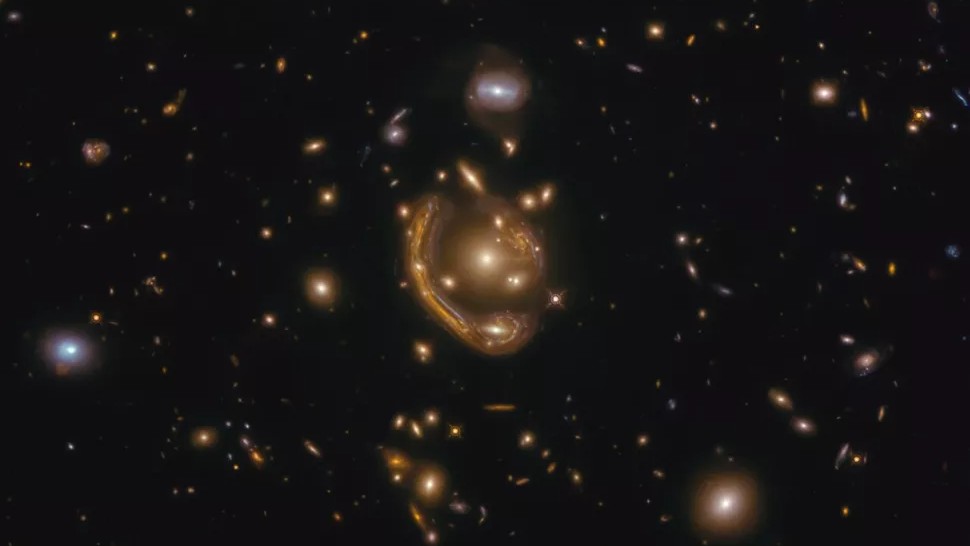
What is dark energy?
Aside from a similar name, dark energy has little to do with dark matter. Dark energy is the name given to the enigmatic phenomenon of the universe's accelerating, runaway expansion — something that shouldn't be happening given the quantity of our universe's matter and the subsequent strength of its gravity. The answer cosmologists have offered is that some mysterious force in the fabric of the universe must be pushing everything outward.
NASA has estimated that 68% of the universe is composed of dark energy; 27% is dark matter, and visible matter makes up just 5%.

Ben Turner is a U.K. based staff writer at Live Science. He covers physics and astronomy, among other topics like tech and climate change. He graduated from University College London with a degree in particle physics before training as a journalist. When he's not writing, Ben enjoys reading literature, playing the guitar and embarrassing himself with chess.










